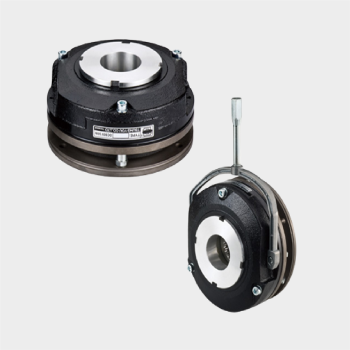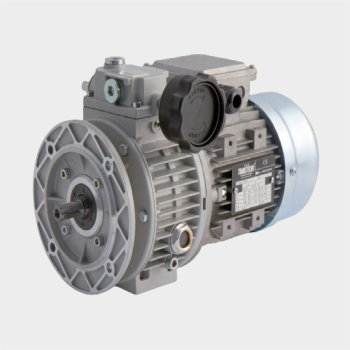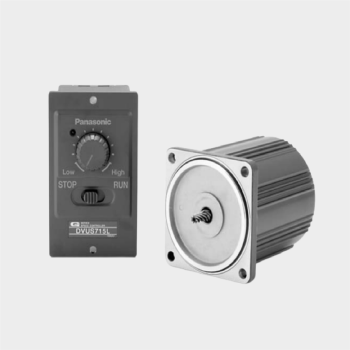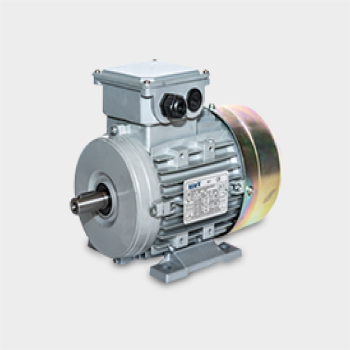Shop
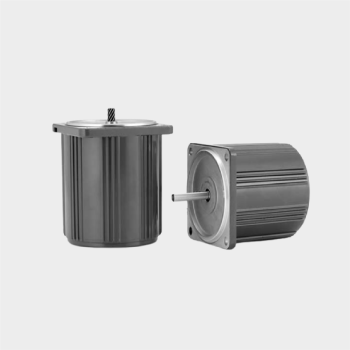
• A quick-reversal run is possible.
• Because of balanced winding, it offers the same performance at both normal and reverse runs.
• The built-in simple brake mechanism makes the overrun small as compared with the induction motor, enabling a quick-reversal run.
• The time rating is 30 minutes. Difference between induction motor and reversible motor: The reversible motor can make a quick-reversal run. In the case of the induction motor, even if the wire connections are changed for a reverse run, it is not possible to reverse the load instantaneously because the torque (shaded area in the figure below) acting in a direction opposite to the rotating magnetic field is produced. Therefore you need to stop the induction motor once, change the wire connections and make a reverse run.(Note)
• Limit the frequency of reversal operation to 6 cycles per minute.
• If it is necessary that the frequency of reversal operation be 7 to 100 cycles per minute, use the C&B motor. (For running in one direction only)
• For applications that need holding, use the electromagnetic brake motor.

• It is a variable speed motor containing a simple brake mechanism.
• The built-in simple brake mechanism makes the overrun small as compared with the induction motor, enabling a quick-reversal run.
• The time rating is 30 minutes.
• By using it together with a speed controller, you can vary the speed over a wider range (90 to 1400 r/min for 50 Hz and 90 to 1700 r/min for 60 Hz).
• Various functions such as variable speed, braking, normal/reverse run and soft-start/soft-stop are available.
• Feedback control with the built-in tacho-generator gives a constant speed despite of frequency change.
• The motor output is 4 W to 90 W.
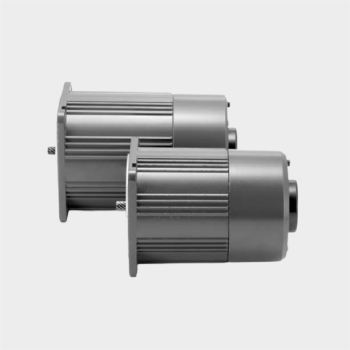
• It is an electromagnetic brake variable speed motor.
• By using it together with a speed controller, you can vary the speed over a wider range (90 to 1400 r/min for 50 Hz and 90 to 1700 r/min for 50 Hz).
• Various functions such as variable speed, braking, normal/reverse run and soft-start/soft-down stop are available by using it together with a speed controller.
• Feedback control with the built-in tacho-generator gives a constant speed despite of frequency change.
• The motor output is 6 W to 40 W.
* For the method of using the electromagnetic brake, refer to the electromagnetic brake motor (page B-168).
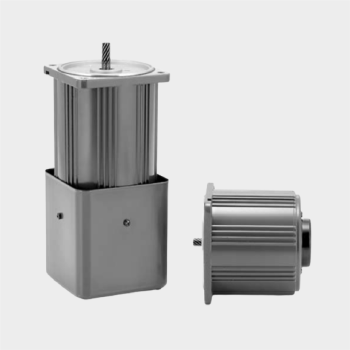
• By using it together with a speed controller, you can vary the speed over a wider range (90 to 1400 r/min for 50 Hz and 90 to 1700 r/min for 60 Hz).
• Various functions such as variable speed, braking, normal/reverse run and soft-start/soft-stop are available.
• Feedback control with the built-in tacho-generator gives a constant speed despite of frequency change.
• The motor output is 3 W to 90 W.

